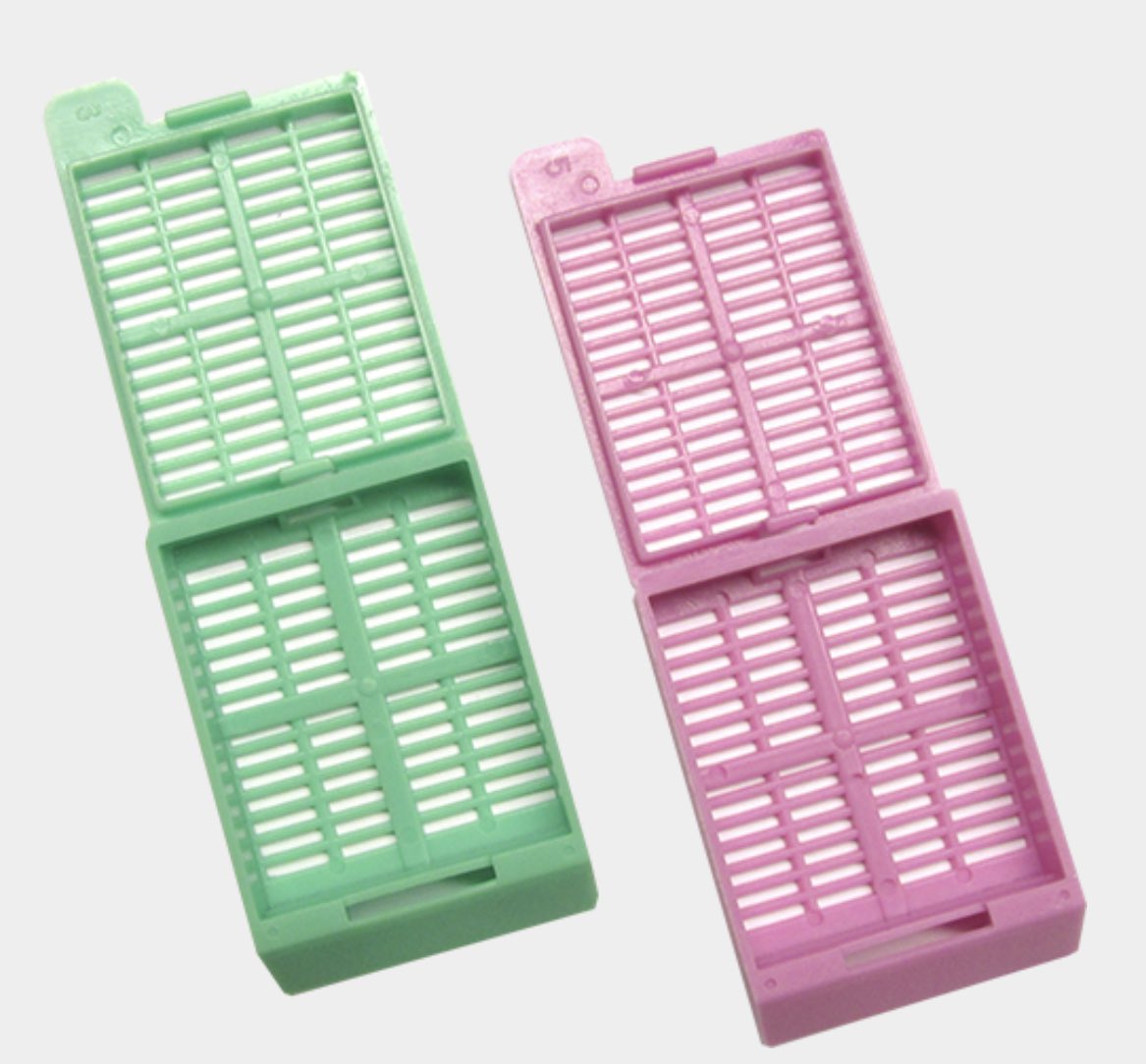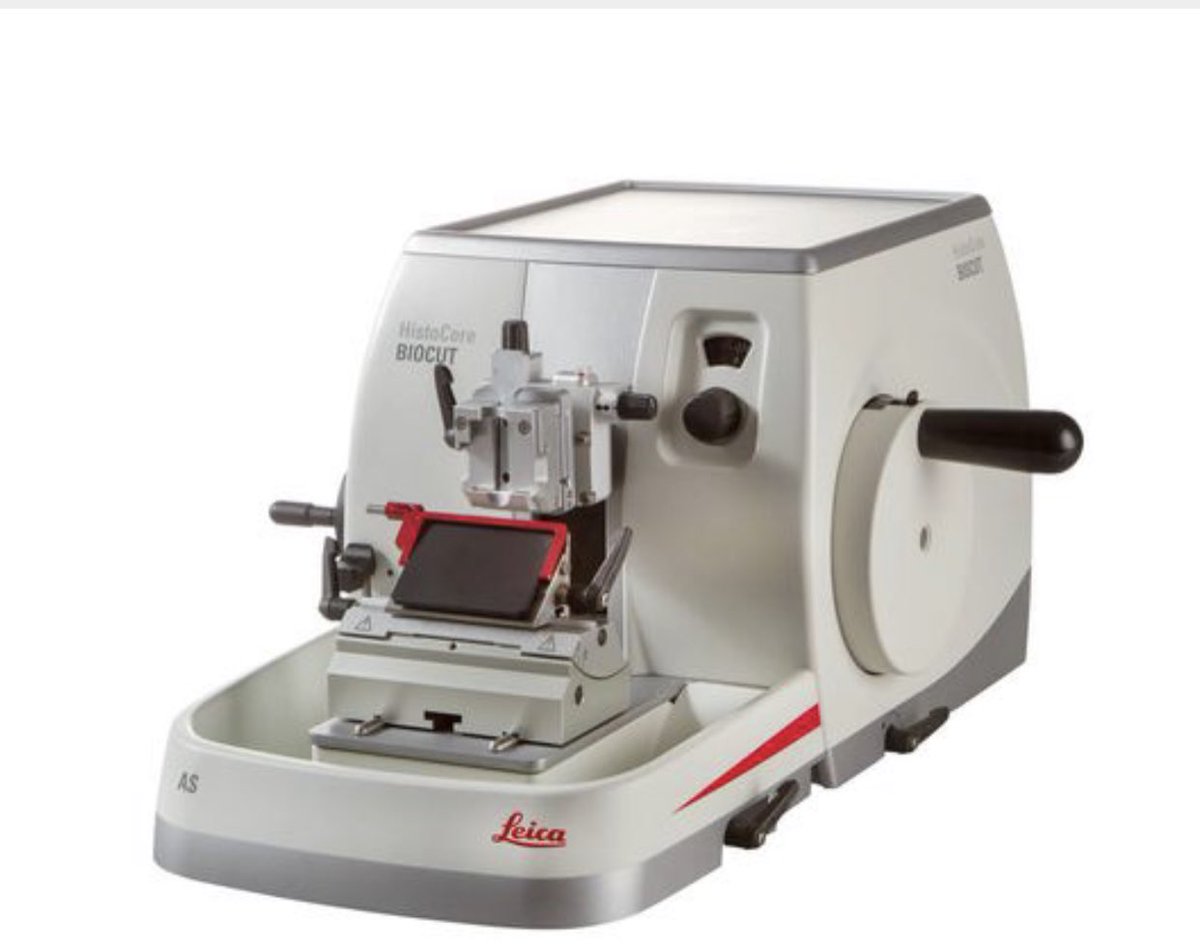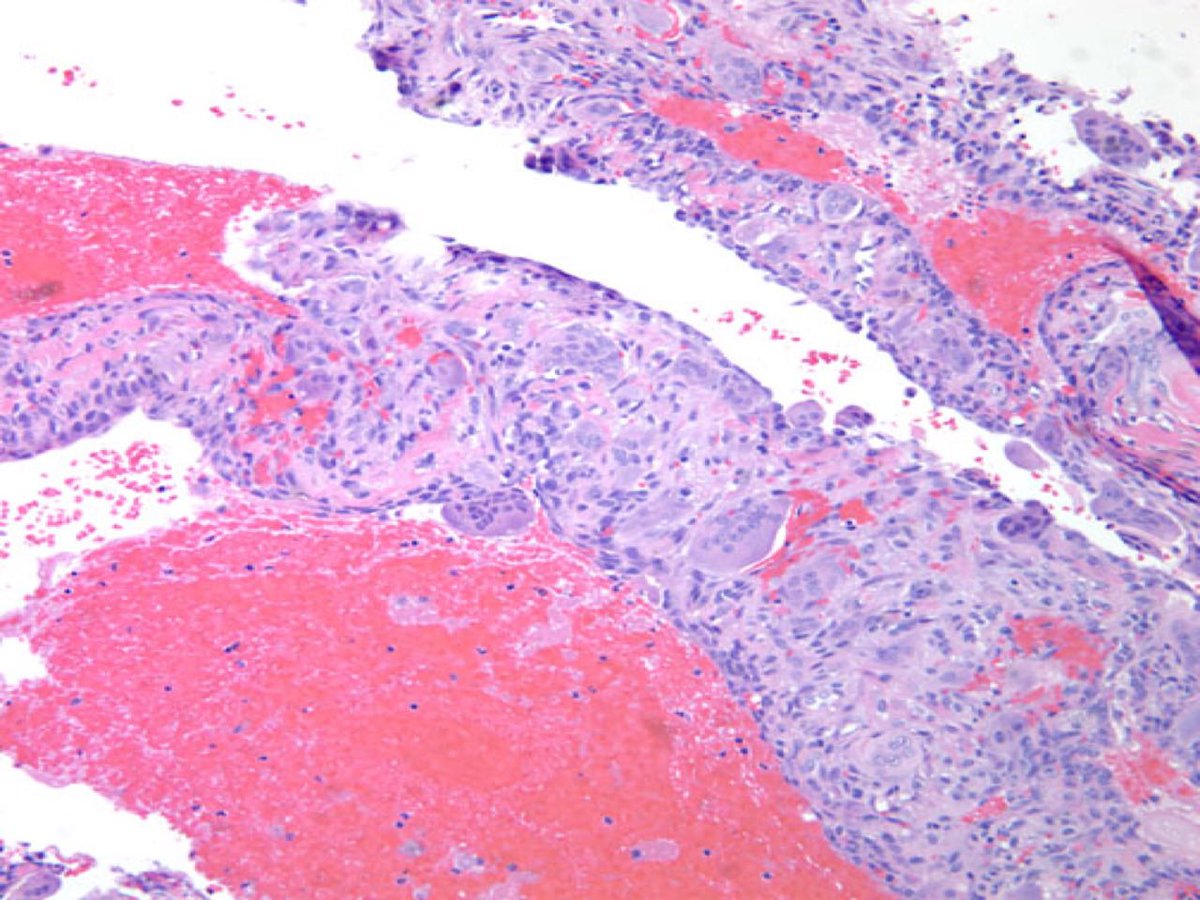Pathologists have lots of jobs. In this thread, I'll walk you through what happens if you have a biopsy or surgery. This is surgical pathology; there are lots of other types of pathology and someday I will write other threads for that. 1/8
The tissue you had removed comes to our lab in a container. It is labeled with your name, your birthday, a medical record number (how you are identified in the hospital or surgicenter) and the physician’s name who performed the procedure 2/8
It comes with a sheet of paper or an electronic order called a requisition. This is how we know you are you. Once we are sure this matches, your tissue is given a unique number within the lab which allows us to identify you. This is called accessioning 3/8
Once your tissue is accessioned, it goes through a process called grossing. When your tissue is grossed, we put it into plastic cassettes. They look like the ones in this picture. 4/8
These cassettes are placed in a machine called a processor where it goes through a series of steps to prepare the tissue for embedding 5/8
After the tissue has been processed, it is placed in paraffin wax in the cassettes you saw earlier. Once the paraffin hardens, it is cut on a microtome and placed onto glass slides 6/8
Once the tissue is on the glass slides, it is stained with dyes so we can see colors under the microscope. The final product is a histology slide which allows your pathologist to make a diagnosis. Here is an example 7/8
Once the pathologist makes their diagnosis, we create a report. The report is what the treating physician shares with the patient so that they understand their diagnosis. There is more than just surgical pathology and I will share that in future posts! 8/8
Tagging @PathologyPatty @bluehatcomics85 @theglasspusher @EviAbadaMD @BrainsSlicer @DrAhmedKalebi @DrGeeONE @marenwhymd @01sth02 @instapathbio @NicoleJacksonMD @CArnold_GI @Sara_Jiang @KMirza @MelissaUpton7 @Autopsy_MD @LizMontgomeryMD @emma_furth @MArnold_PedPath @TobyCornish

 Read on Twitter
Read on Twitter



